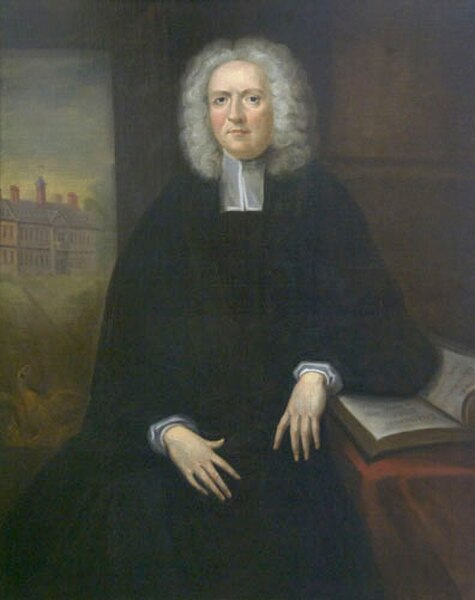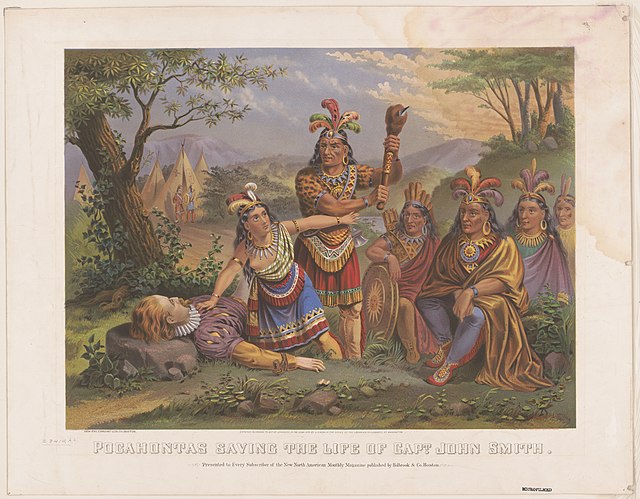First Families of Virginia
First Families of Virginia (FFV) are the families in colonial Virginia who are socially prominent and wealthy, but not necessarily the earliest settlers. They descend from English colonists who primarily settled at Jamestown, Williamsburg, the Northern Neck and along the James River and other navigable waters in Virginia during the 17th century. These elite families generally married within their social class for many generations and, as a result, most surnames of First Families date to the colonial period.
View of the main façade of Stratford Hall in Westmoreland County, the ancestral home of the Lee family of Virginia. Along with the Byrds, Carters, Washingtons, Harrisons and others, these families were at the core of Virginia's plantocracy for centuries.
Mann Page II of Rosewell, painted by Charles Bridges. The Rosewell plantation was called one of the finest homes in colonial America and built of brick imported from England.
Pocahontas by Simon de Passe
James Blair (clergyman)
Pocahontas was a Native American woman belonging to the Powhatan people, notable for her association with the colonial settlement at Jamestown, Virginia. She was the daughter of Powhatan, the paramount chief of a network of tributary tribes in the Tsenacommacah, encompassing the Tidewater region of what is today the U.S. state of Virginia.
Pocahontas saves the life of John Smith in this chromolithograph, credited to the New England Chromo. Lith. Company around 1870. The scene is idealized; there are no mountains in Tidewater, Virginia, for example, and the Powhatans lived in thatched houses rather than tipis.
The abduction of Pocahontas (1624) by Johann Theodor de Bry, depicting a full narrative. Starting in the lower left, Pocahontas (center) is deceived by weroance Iopassus, who holds a copper kettle as bait, and his wife, who pretends to cry. At center right, Pocahontas is put on the boat and feasted. In the background, the action moves from the Potomac to the York River, where negotiations fail to trade a hostage and the colonists attack and burn a Native village.
John Gadsby Chapman, The Baptism of Pocahontas (1840). A copy is on display in the Rotunda of the United States Capitol.
Statue of Pocahontas outside St George's Church, Gravesend, Kent, where she was buried in a grave now lost








